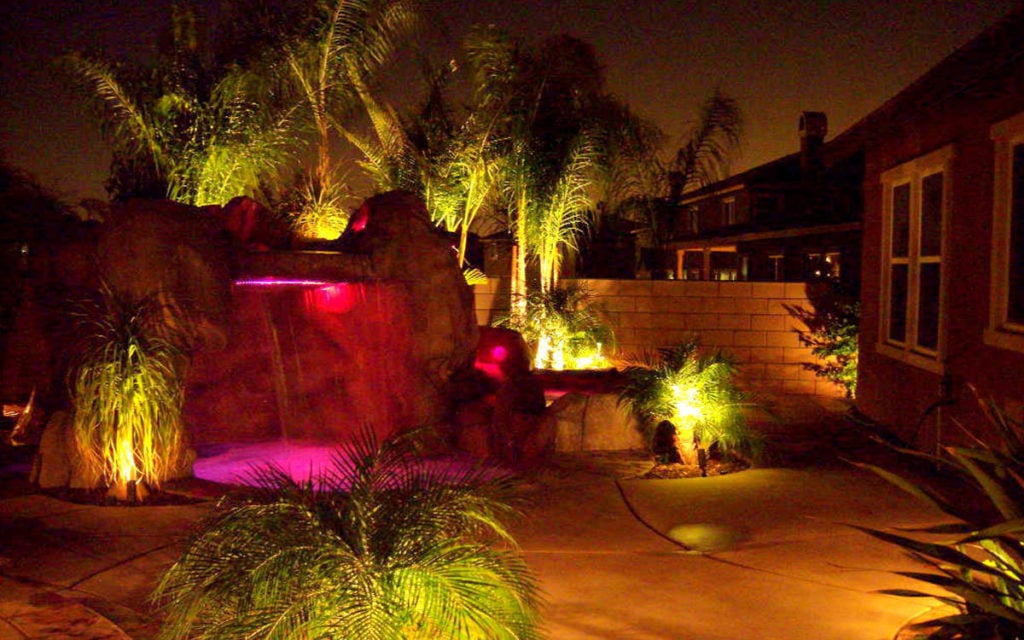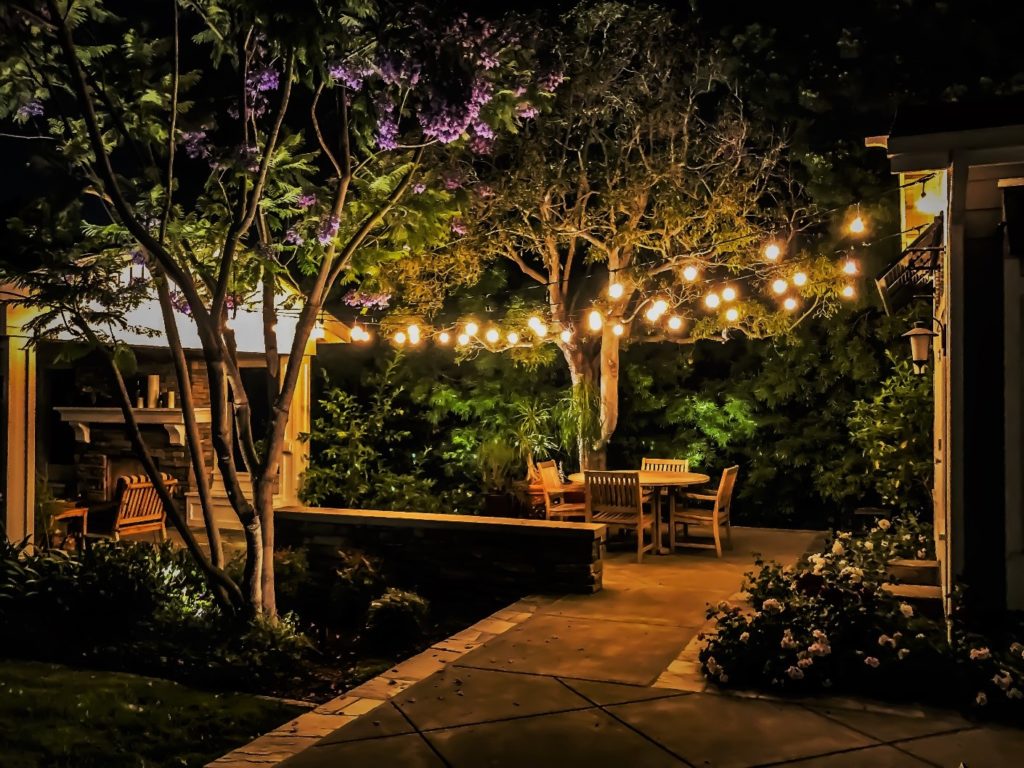Landscape Lighting LED Bulbs
You’ve probably seen them in your neighbor’s yard, or maybe even on a commercial property. Landscape lighting is an easy way to enhance the beauty of your home and increase its curb appeal for potential buyers. The process can be done in steps, with each step adding landscape lighting led bulbs work for doing something different to the look.
Once you’ve got all the basics down-lights, motion sensors, timers-you can start thinking about upgrading bulbs from incandescent to LED! LEDs are energy efficient and last longer than other types of bulbs too. But before you make any changes keep these four things in mind:
1) Check local zoning ordinances for permission;
2) Consider how much light you need outside at night
3) Choose lights that provide multiple levels of brightness
4) And finally-use high-quality materials!

Landscape Lighting Led Bulbs
Here are some other ideas on how to best utilize LEDs in your landscape lighting:
Swiveling Heads
Adding a swiveling head to your lights will add great versatility and control. Rather than having spotlights that only shine in one direction, you can swivel the lamps to shine where they’re needed and direct light exactly where it should be rather than wasting all of it shining into someone’s window.
Sensors & Timers
Motion sensors and timers save energy while keeping you safe and secure outside at night. Sensors detect when someone is nearby and turn on or off accordingly-imagine never coming home to a dark house again! You set them so that they turn on or off at a certain time every day.
Light Levels
One of the benefits of LED bulbs is that they come in different light intensities and colors, which you can hopefully see at night! You could purchase more expensive high-intensity lights if you’re looking for brightness. Lower quality lights give off just enough light and cost less to replace and maintain, however, sometimes even these low-intensity LED’s are too bright for locations such as backyards where neighbors live close by.
There are a number of reasons why LED bulbs are a good investment for many different kinds of people. They offer lower energy consumption, less upkeep and come in different colors and intensities which help with balancing brightness and energy usage.
The four main things to consider with landscape lighting are zoning ordinances, light levels, safety & security, and maintenance & replacements. You can learn more about all of these considerations from a professional landscaper or contractor!
FAQs
What kind of power source do I have?
If you have a large yard or that needs a lot of lights it’s important to think about your power supply before getting started. The best is a buried cable that runs from an outdoor outlet to wherever you want the lights. If going this route be sure to hire a professional electrician because the cable is underground and difficult for homeowners without experience to install themselves. For smaller spaces, there is also solar-powered landscape lighting which can be bought at hardware stores. But what about the power supply for all those lights? If you want to use low voltage (like LED) be sure that all of your lights are on the same circuit or at least compatible with each other.
What kind of lighting do I need outside at night?
We recommend using low-voltage, low-intensity LED bulbs because they don’t emit as much light and therefore won’t disturb neighbors. For example, if one light bulb shines bright enough for you to see clearly across your yard, it will be bright enough for anyone else in the neighborhood to see as well-which might not always be desirable! High-intensity lights offer more brightness but require more energy which could strain your wallet over time. What’s the right light for your needs?

LED Pool Lighting
There are many benefits to using LED bulbs for landscape lighting. Some of the top reasons include:
1) Low energy consumption – LED bulbs to use up to 90% less energy than traditional incandescent bulbs, making them a more cost-effective choice in the long run.
2) Low maintenance – LED bulbs to have a lifespan of up to 50,000 hours, meaning you won’t have to replace them as often as other types of bulbs.
3) Variety of colors and intensities – LED bulbs to come in different colors and intensities, making it easy to find the perfect bulb for your needs.
4) Longer lifespan – LED bulbs to have a lifespan of up to 20 years so you won’t have to worry about them burning out quickly.
5) Ease of installation – LED’s are more energy-efficient and being low voltage makes them easier for homeowners without experience to install.
6) Environmentally friendly – Unlike incandescent, halogen, or CFL bulbs which contain mercury, LED bulbs don’t pose the same threat if broken because they aren’t hazardous materials (however it is still recommended that you dispose of them properly).
7) Durability – With increased resistance to high temperatures, shocks, and vibrations, LED lights are more durable than most other types of bulbs.
When choosing the right lights for your needs, it’s important to consider a few things:
1) What look do you want? There are many different types of landscape lighting to choose from so be sure to pick something that will match the style of your house and yard.
2) How much light do you need? If you need a lot of light, then high-intensity lights might be the best option for you. But if you’re looking for something that emits less light, then low-voltage LED bulbs are a better choice.
3) Where will the lights be used? Some lights are better suited for certain areas than others. For example, lamp post lights are perfect for illuminating driveways and walkways, while wall washers are good for decorative purposes.
4) How secure do you want the lights to be? Motion sensors and timers can help decrease energy use by turning off the lights when they aren’t needed, but these functions also make your outdoor lighting more vulnerable to theft. When trying to choose between swivel heads, motion sensors or timers keep security in mind.
5) What type of bulb do you want? While LED bulbs are always a great choice, there are benefits to using other types of light bulbs as well. CFL’s emit less heat than other types of bulbs so they’re great for warmer climates, halogens burn brighter than most types of LED’s which makes them if you need a lot of light, high-pressure sodium bulbs are great for commercial locations and incandescent bulbs are inexpensive to buy.
Landscape lighting LED bulbs to emit less heat than other types of light bulbs, making them a great option for warmer climates where there’s little need to worry about the lights overheating. Other benefits of using LED’s include:1) Energy efficiency- LED landscaping lights use up to 87% less energy than incandescent, halogen, or CFL bulbs which makes them great for reducing your electricity bill.2) low voltage- Being low voltage also makes LEDs easier to work with when installing. 3) Durable- With increased resistance to high temperatures, shocks, and vibrations, LED lights are more durable than most other types of bulbs.4) Longer lifespan- LED bulbs to have a lifespan of up to 50,000 hours so you won’t have to worry about changing them as often.5) Eco-friendly- LED bulbs to have a low carbon footprint and contain no mercury or harmful materials, making them safer for the environment (however it’s still recommended that you dispose of them properly).6) Swivel heads- With swivel heads, landscape lighting can be adjusted to adapt to any situation.7) Less heat output- LED bulbs to emit less heat than other types of bulbs which makes them a great option for warmer climates where there’s little need to worry about lights overheating.8) Motion sensors and timers- There are many different features that make LEDs a great option for your landscape lighting.

Outdoor String Lighting
https://www.google.com/maps?cid=14125570828538176086
23011 Moulton Pkwy G7, Laguna Hills, CA 92653
(949) 455-9914
https://oclights.com/

Leave A Comment